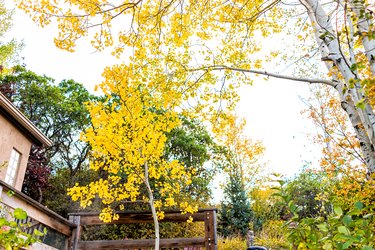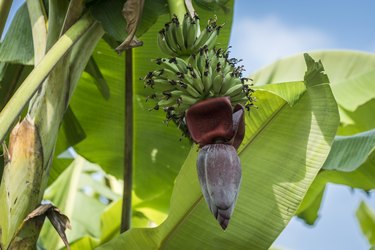If your cherry tree (Prunus spp.) doesn’t bud or leaf out in the spring, you know it’s dying. ) is dead. But you can also look at some parts of the tree in the fall or winter to see if it really has died and not just gone to sleep. If you change how you plant and care for your new cherry tree, you might be able to keep it from dying. Fruiting cherry trees will, however, die naturally in about 10 to 25 years.
In the spring, a dead cherry tree will not have any buds or leaves, and there will be no green space under its bark.
Has your beloved cherry tree failed to leaf out this spring? Are its branches showing signs of dieback? Unfortunately, cherries can sometimes die from issues like disease, weather damage or improper care. But how can you confirm if your cherry tree is truly dead and not just dormant? Here are the best ways to determine if your cherry has passed on for good or still has hope of revival.
Signs Your Cherry Tree May Be Dead
Here are some clear indicators that a cherry tree may have died
- No new leaves emerge after several months into spring
- Hard, shriveled buds that fail to swell and open
- Brittle, desiccated branches that easily snap
- Bark that is dried out and peeling off the trunk
- Evidence of cankers (sunken wounds) on branches or the trunk
- Topmost branches that died first, spreading downward – a sign of disease
- Lack of new growth during the entire growing season
If you observe these symptoms, it’s quite possible your cherry tree has died But next, confirm with some hands-on diagnostic tests.
Testing for a Dead Cherry Tree
While a lack of leaves is a giveaway, two tests provide confirmation if a cherry tree is dead or alive:
The Branch Scratch Test
This simple test determines if green, moist tissue still exists under the bark, signaling life.
-
On multiple main branches, use your fingernail or knife tip to scratch away a small patch of outer bark.
-
If the tissue beneath is greenish and moist, that branch is alive.
-
If you only see brown, dry tissue, that branch is likely dead.
-
Check in several spots around the tree. If everything under the bark is brown and brittle, the tree has likely died.
The Bud Test
Slice into several plump-looking buds with a sharp knife.
-
If the buds are still greenish inside and moist, they are still alive and may leaf out later.
-
If buds are brown and shriveled inside, those branches have died.
Repeat this test over different parts of the tree to get an overall assessment. If buds everywhere are dead, the tree likely won’t be reviving.
What Kills Cherry Trees?
If your tests confirm your cherry tree has passed away, what possibly caused its demise? Here are some common cherry tree killers:
-
Improper planting – Planting the tree too deeply can suffocate roots or encourage rot.
-
Overwatering – Excess moisture deprives roots of oxygen.
-
Underwatering – Drought stress can kill cherries.
-
Disease – Fungal diseases like canker, rust, and black knot infect cherries.
-
Pests – Borers, tent caterpillars, and other pests can infest cherries.
-
Environmental factors – Excess cold, heat, or wind can injure cherries.
-
Old age – Cherries naturally decline after 10-25 years.
Options When Your Cherry Tree Dies
After confirming your cherry tree’s demise, you now face some decisions:
-
Replace it – Remove the dead tree and replant the same or a new variety suited to your growing conditions.
-
Leave as habitat – If disease isn’t suspected, leave the dead tree standing as nesting sites for wildlife.
-
Craft projects – Cherry wood makes attractive rustic crafts and furniture.
-
Firewood – Chop up the tree for smoking chips or firewood.
If you opt to replant, take steps to give the new tree its best chance:
-
Select a disease-resistant variety if disease was the issue.
-
Improve soil drainage and avoid overwatering.
-
Give the tree plenty of sun.
-
Water deeply but infrequently once established.
-
Prune judiciously to promote air circulation.
-
Use preventative fungicides/insecticides if pests were problematic.
Caring for Young Cherry Trees
If you have a new, young cherry tree that is struggling, take proactive steps to protect your investment:
-
Ensure it receives 1-2 inches of water per week until established.
-
Stake the tree to prevent wind damage to the fragile roots.
-
Paint the trunk with whitewash to prevent sunscald.
-
Weed thoroughly to reduce competition for nutrients.
-
Apply a balanced fertilizer in early spring when growth resumes.
-
Prune only lightly in the first year – remove crossing or damaged branches.
-
Monitor for disease and pests and treat promptly if spotted.
Catching issues early gives a young tree its best chance at survival. Be patient – it may take 2-3 years for a newly planted cherry to really get growing and start fruiting.
Is My Mature Cherry Tree Dead or Dormant?
If your established cherry tree looks lifeless but you’re unsure, here are tips to discern if it’s dead or just dormant:
-
Give it extra time in spring to be sure no buds swell – wait 3-4 weeks after expected leaf out.
-
Scrape multiple small patches of bark to check for any signs of green.
-
Examine the tree closely for even one live bud or tiny branch showing evidence of life.
-
Check whether the bark is brittle and peeling off in large sheets – a sign of death.
-
Look for exit holes or frass from boring insects that may have damaged the cambium.
-
Note if branches high up in the tree died first, possibly signaling disease.
Be patient and thoroughly assess the tree before removing a dormant but living specimen. But also don’t leave a dead tree standing to serve as a pest breeding ground. Proper diagnosis will ensure you know if your beloved cherry has any hope of revival or if it’s truly gone for good.
Confirming Cherry Tree Death
You can quickly tell if your cherry tree has died or is just dormant by using the “bark scratch test.” Use a sharp, clean knife to remove the top layer of bark from a branch on the main stem. Do this over an area of about 1 square inch. That branch is still alive if you see a strip of tan tissue in the middle with green tissue on either side. If you dont see green tissue, the branch has died.
Home Hacks & Answers


Video of the Day
Before you say the tree is dead, do the bark scratch test on all the branches that come out of the trunk. Its possible that one branch has sustained damage and has died while the other branches remain healthy. In that case, remove the dead branch. If the branch looks like it died from an infection, don’t compost it, and make sure to clean your pruning tools with alcohol after you take it off the tree.
Planting a New Cherry Tree
Before you dig up the dead cherry tree and plant a new one, try to figure out why the old one died so you can take good care of the new one. Two common mistakes that can kill a cherry tree when planting are putting the root ball too deep and in soil that doesn’t drain well. But if the cherry tree has been doing well for a long time, it may have reached the end of its natural lifespan.
Take a look at the base of the old cherry trees trunk before digging it up. See if you can see a flare where the trunk starts to branch out into roots. If not, the tree may have been planted too deeply, which caused the trunk to rot where it touched wet soil at the base. The roots can also rot or succumb to fungal infections if the soil remains soggy.
Home Hacks & Answers


In addition, poor-draining soil affects the trees respiration or oxygen intake. The tree essentially suffocates because water pushes essential oxygen out of air pockets in the soil, making it unavailable to the plant. If possible, choose a different planting site if the old tree was in a low-lying area, or build up the area where the tree was planted. Because cherry trees have relatively shallow root systems, you can also amend the native soil with organic matter, such as humus and composted animal manure, up to about 18 inches deep and in a 6-foot radius around the planting site.
What Mysterious Thing KILLED my Cherry Tree?!? | Something ATE My Fruit Tree Roots!
FAQ
Can I revive a dead cherry tree?
Why does my cherry tree have no leaves?
Can a tree look dead but still be alive?
Do cherry trees go dormant?
Is it possible to revive a dead tree?
How do you know if a cherry tree is dead?
The “bark scratch test” allows you to quickly determine whether your cherry tree has died or is simply dormant. On a branch located on the main stem, scratch off the topmost layer of bark with a sharp, clean knife over about 1 square inch of bark. If you see a central strip of tan tissue with green tissue on either side, that branch is still alive.
Why is my cherry tree dying?
If you have a cherry tree that appears to be dying, there are several potential reasons why this may be happening. The most common causes of a dying cherry tree include disease, pests such as borers or aphids, improper watering or fertilization, and environmental factors like extreme temperatures or drought.
Do cherry trees die naturally?
Fruiting cherry trees will, however, die naturally in about 10 to 25 years. A dead cherry tree will have no buds or leaves in the spring and no green tissue under its bark. The “bark scratch test” allows you to quickly determine whether your cherry tree has died or is simply dormant.
Can you save a dying Cherry Tree?
Cherry trees that are dying can be saved if you find the primary issue and employ the right solution. Typically, it takes several weeks or months for a cherry tree to completely die, depending on the issue. To see if your cherry tree is still alive, prune a small branch and see if there’s any green inside. 1. Over or Under-Watering
- The Ultimate Guide to Growing Strawberries in Raised Beds - August 8, 2025
- No-Dig Garden Beds: The Easiest Way to Grow a Beautiful Garden - August 6, 2025
- How to Protect and Preserve Wood for Raised Garden Beds - August 6, 2025

